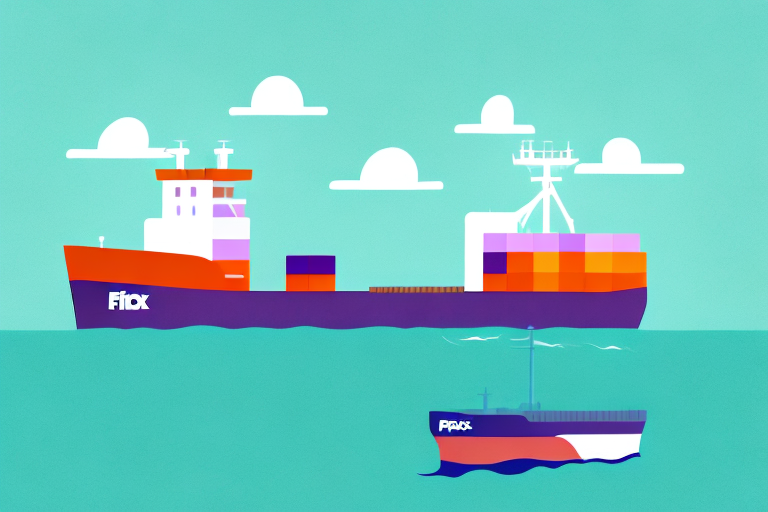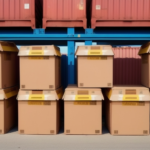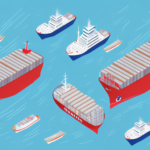Understanding FedEx Sea Shipping Rates
If you're a business owner needing to transport products internationally, understanding the intricacies of sea shipping rates is essential. FedEx is a leading carrier in this domain, offering reliable and cost-effective solutions. This guide provides an in-depth analysis of FedEx sea shipping rates, factors influencing costs, comparisons with other carriers, and tips to optimize your shipping strategy.
How FedEx Sea Shipping Works
FedEx sea shipping operates through freight forwarding, utilizing cargo ships to transport goods across oceans. Here's a step-by-step breakdown:
- Your products are loaded onto a FedEx cargo ship.
- The ship transports the goods to the designated destination port.
- Upon arrival, the products are transferred to trucks or other transportation means for final delivery to your location.
One major advantage of using FedEx sea shipping is its cost-effectiveness for large shipments. Cargo ships can handle substantial volumes, reducing the per-unit cost compared to air freight.
Additionally, sea shipping is a more environmentally friendly option. According to the ShipScience Environmental Report 2023, cargo ships emit significantly less carbon dioxide per ton-mile than airplanes, making it a sustainable choice for eco-conscious businesses.
Factors That Influence FedEx Sea Shipping Rates
Several elements impact the cost of FedEx sea shipping:
- Total Weight: Heavier shipments incur higher costs.
- Package Dimensions: Larger packages may require more space, increasing the rate.
- Distance: Longer routes typically cost more.
- Service Type: Choices like Full Container Load (FCL) or Less than Container Load (LCL) affect pricing.
- Nature of Goods: Special handling for hazardous or perishable items can add to costs.
- Seasonality: Peak seasons, such as holidays, may see elevated rates due to high demand.
Moreover, according to the 2023 FedEx Shipping Rate Summary, fluctuations in fuel prices and global trade policies can also influence shipping rates.
Comparison of FedEx Sea Shipping Rates with Other Carriers
When evaluating sea shipping options, it's crucial to compare FedEx with other carriers:
| Carrier | Shipping Times | Cost | Reliability | Additional Services |
|---|---|---|---|---|
| FedEx | 20-30 days | Competitive for large shipments | High | Real-time tracking, dedicated customer support |
| Maersk | 25-35 days | Generally lower for bulk | High | Extensive global network |
| CMA CGM | 22-32 days | Competitive rates | High | Flexible scheduling options |
While FedEx may have higher rates compared to some carriers like Maersk or CMA CGM, it compensates with superior tracking capabilities and customer service. Businesses prioritizing reliability and comprehensive support might find FedEx more advantageous despite the cost difference.
How to Calculate FedEx Sea Shipping Rates
Calculating your FedEx sea shipping rates involves several steps:
- Determine the weight and dimensions of your shipment.
- Choose the shipping service (FCL or LCL).
- Input these details on the FedEx Shipping Calculator or consult your local FedEx office.
- Consider any additional fees for special handling or expedited services.
For instance, an LCL shipment of 500 kg with standard dimensions over a 10,000 km route may cost approximately $2,500, whereas an FCL shipment could offer discounts for bulk.
FedEx also provides [containerization options](https://www.shipscience.com/container-options) that cater to different shipment sizes and requirements, ensuring flexibility and cost-efficiency.
Tips for Saving Money on FedEx Sea Shipping Rates
Optimize your shipping strategy with these cost-saving tips:
- Consolidate Shipments: Combine multiple orders into a single shipment to reduce per-unit costs.
- Flexible Timing: Opt for slower shipping speeds during off-peak seasons to benefit from lower rates.
- Negotiate Rates: Long-term or high-volume shippers can negotiate discounts with FedEx.
- Utilize Promotions: Keep an eye on FedEx promotions or partner discounts that can lower shipping expenses.
- Optimize Packaging: Proper packaging minimizes damage risks and avoids additional fees. Use sturdy, compact packaging to maximize space efficiency.
Common Misconceptions About FedEx Sea Shipping Rates
Understanding sea shipping requires debunking prevalent myths:
- Sea Shipping is Always Cheaper: While often more cost-effective for large shipments, smaller packages may not benefit from sea rates compared to air shipping.
- Sea Shipping is Always Slower: Although generally slower, certain routes and services can offer competitive transit times, especially when direct flights are unavailable.
- Sea Shipping is Less Reliable: Modern logistics and tracking technologies have significantly enhanced the reliability of sea shipping, making delays less frequent.
Understanding the Different Types of FedEx Sea Shipping Services Available
FedEx offers various sea shipping services tailored to different needs:
- Less-than-Container Load (LCL): Ideal for smaller shipments that don't require a full container. Multiple shipments share container space, making it a cost-effective option.
- Full Container Load (FCL): Best suited for large volumes, providing exclusive use of an entire container. This option ensures maximum security and is optimal for oversized or heavy items.
- Roll-on/Roll-off (RoRo): Designed for vehicles and machinery, allowing items to be driven directly onto the ship, simplifying the loading process.
Choosing the right service depends on your shipment size, budget, and specific requirements. For detailed service options, visit FedEx International Sea Shipping.
Pros and Cons of Using FedEx Sea Shipping for Your Business Needs
Advantages
- Cost-Effective: Lower rates for bulk shipments compared to air freight.
- Environmental Sustainability: Reduced carbon footprint with lower emissions per ton-mile.
- Flexibility: Multiple service options cater to various shipping needs.
- Comprehensive Tracking: Real-time updates enhance shipment visibility.
Disadvantages
- Longer Transit Times: Not suitable for urgent or time-sensitive deliveries.
- Potential for Delays: Subject to unforeseen factors like weather or port congestion.
- Handling Complexity: Managing larger shipments may require more logistical coordination.
Businesses must weigh these pros and cons to determine if FedEx sea shipping aligns with their operational needs and customer expectations.
How to Track Your FedEx Sea Shipments and Delivery Times
Stay informed about your shipment's status with FedEx's tracking tools:
- Online Tracking: Use the FedEx Tracking System by entering your tracking number to receive real-time updates.
- Mobile App: Download the FedEx mobile app for on-the-go tracking and push notifications.
- Customer Service: Contact FedEx support for detailed inquiries or assistance with tracking.
Delivery times can vary based on factors like distance, weather, and customs processing. On average, international sea shipments take between 20 to 40 days. For precise estimates, consult the FedEx tracking portal or speak with a FedEx representative.
Best Practices for Packaging and Labeling Your FedEx Sea Shipments
Ensure the safety and compliance of your shipments with these packaging and labeling guidelines:
- Sturdy Packaging: Use durable boxes or containers to protect against rough handling and environmental factors.
- Padded Securing: Cushion goods with padding materials to prevent movement and damage during transit.
- Clear Labeling: Accurately label packages with destination addresses, handling instructions, and contact information.
- Compliance: Adhere to international packaging and labeling regulations to avoid delays or penalties. Refer to the ShipScience Compliance Guide for detailed requirements.
- Waterproof Materials: Utilize waterproof packaging to protect goods from moisture and humidity prevalent in sea transport.
Proper packaging not only safeguards your products but also streamlines the shipping process, reducing the risk of additional fees due to damaged goods.
In conclusion, understanding and optimizing FedEx sea shipping rates can lead to significant cost savings and efficient logistics for your business. By considering the various factors influencing costs, comparing services, and adhering to best practices in packaging and labeling, you can ensure your products are transported safely and economically across global waters.






















